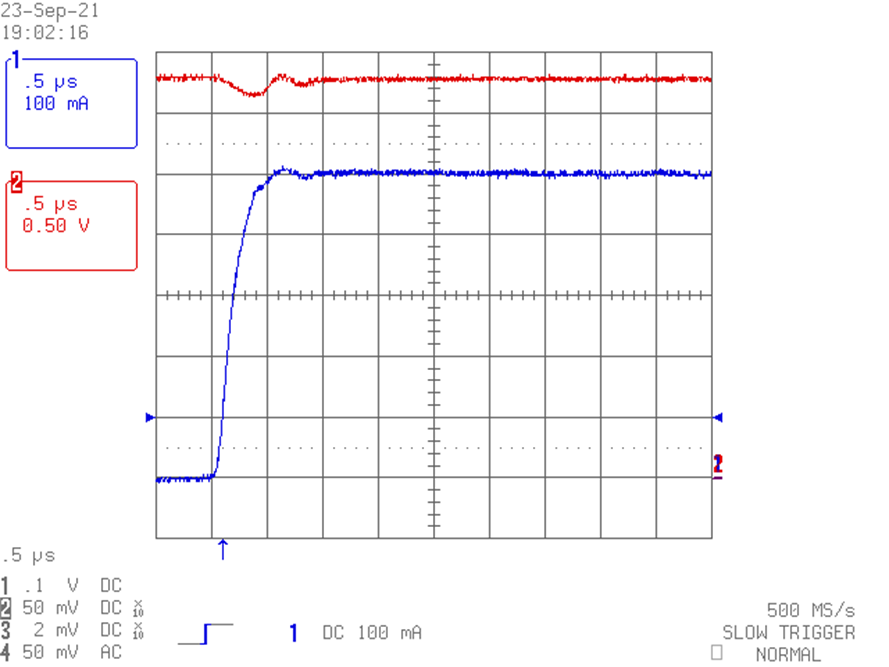SBVU072 October 2021 TPS7A21
3.4 Optional Load Transient Circuit Operation
The TPS7A21EVM-059 evaluation module contains an optional high-performance load transient circuit to allow efficient testing of the TPS7A21 LDO load transient performance. To use the optional load transient circuit, install the correct components in accordance with the application. Modify the input and output capacitance connected to the TPS7A21 LDO to match the expected operating conditions. Determine the desired peak current to test, and modify the parallel resistor combination of R2, R3, R4, R5, and R6 as shown:

The slew rate of the load step can be adjusted by C9, R7, and R8. In this section, only R8 is adjusted to set the slew rate. For a 0-mA to 500-mA load step, use Table 3-1 to select a value of R8 that results in the desired rise or fall time.
| R8 | Rise Time | Fall Time |
|---|---|---|
| 54.9 kΩ | 6 µs | 10 µs |
| 27.4 kΩ | 3 µs | 5 µs |
| 13.6 kΩ | 1.5 µs | 2.8 µs |
| 6.81 kΩ | 750 ns | 1.5 µs |
| 3.4 kΩ | 500 ns | 750 ns |
| 1.69 kΩ | 200 ns | 500 ns |
| 845 Ω | 100 ns | 200 ns |
| 422 Ω | 50 ns | 100 ns |
| 210 Ω | 30 ns | 50 ns |
| 105 Ω | 20 ns | 30 ns |
After the EVM is modified (if needed), connect a power supply to banana connectors J14 (VDD) and J18 (GND) with a 5-V DC supply and a 1-A DC current limit. As shown in Figure 3-3, the TPS7A21 transient response is very fast and the output voltage recovers in well under 1 ms after the initial load transient. Therefore, use a load transient pulse duration limit of 1 ms to prevent excessive heating of the pulsed resistors (R2, R3, R4, R5, and R6). Configure a function generator for the 50-Ω output, in a 0-V DC to 5-V DC square pulse. If necessary, burst mode can be configured in the function generator for repetitive, low duty cycle, load transient testing.
A 3.4-kΩ resistor is installed on the EVM at R8. This resistor provides approximately 1 A/μs slew rate from 0 mA to 500 mA. Figure 3-3 provides example test data with R8 = 3.4 kΩ. The red trace is the output voltage and the blue trace is the output current. J7 provides 1 mA of DC load current and R2, R3, R4, R5, and R6 provide 499 mA of pulsed load. The resulting test data shows a 1-mA to 500-mA load step on VOUT of the LDO, with only a 1-μF capacitor on the output of the LDO.
 Figure 3-3 TPS7A21EVM-059 Load
Transient Results
Figure 3-3 TPS7A21EVM-059 Load
Transient Results